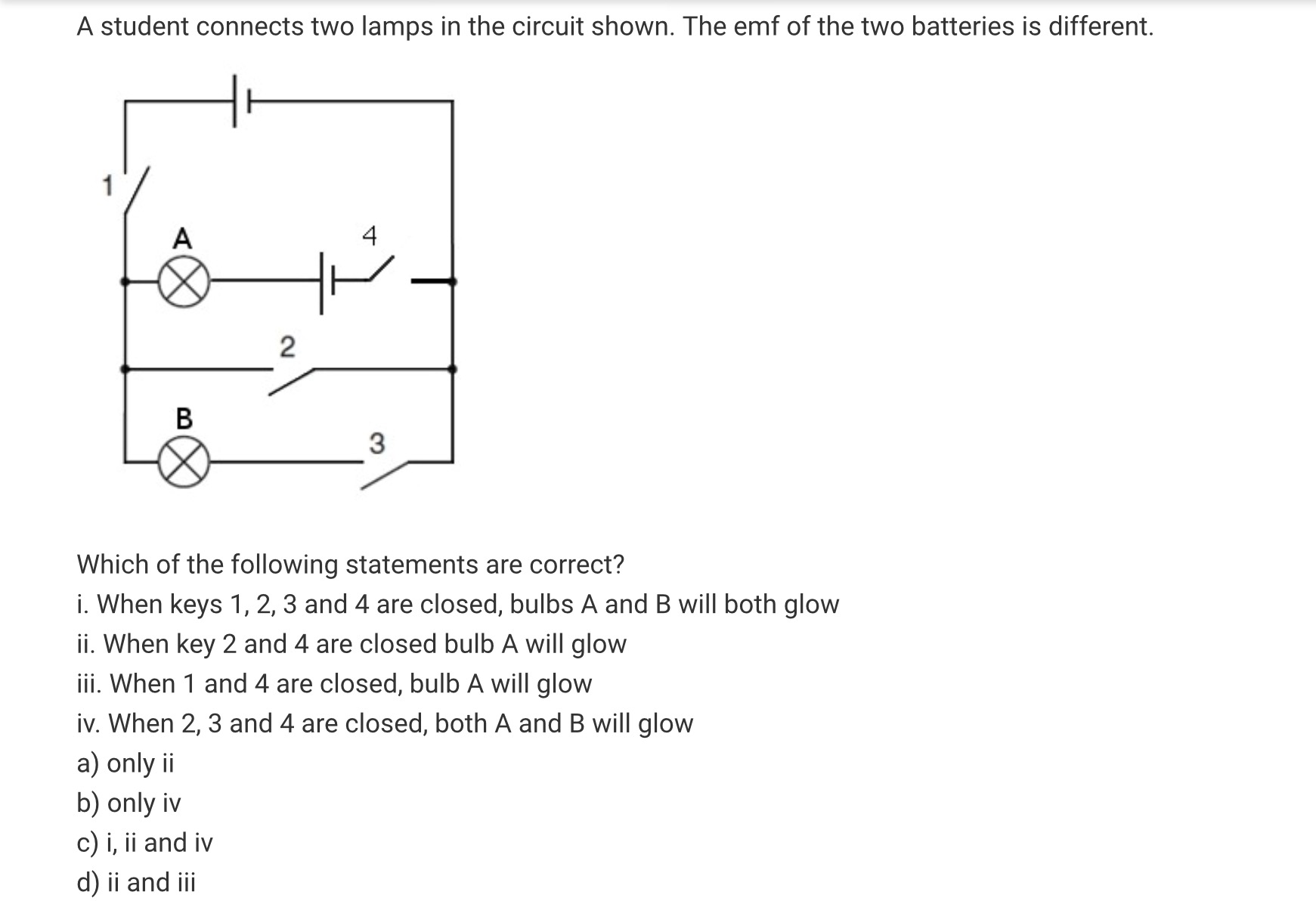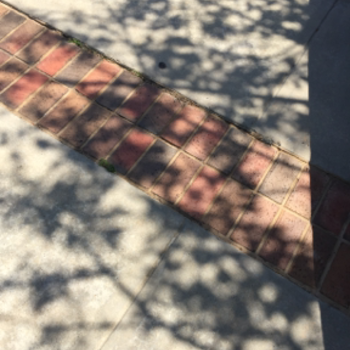Can you explain in detail why the answer is D ?

1 Answer
D is correct because Key 2 short circuit others.
Explanation:
When Key 2 is closed, the branch containing Key 2 has zero resistance. This means that all currents generated elsewhere prefers to go through this branch over other any others. (Why? Because other three branches either contain a bulb, a battery or both that have resistance. A current when encounter multiple pathways, always seek one that has zero resistance first, short circuiting all others)
Case i: Current originated from the top battery will only go through the Key 2 branch, bypassing Key 3 and Key 4 branches. So it doesn't lit any of the two bulbs. Current originated from the battery in the Key 4 branch will loop through Bulb A and Key 2 branch only, lighting the the bulb. No current will go to Key 3 branch at all. So only Bulb A is lit, not Bulb B.
Case ii. This case is obviously true.
Case iii . It is true because batteries have different emf's. The effective emf is the difference between them. The difference may be enough to lit Bulb A.
Case iv. The argument is the same as case i. Only Bulb A is lit.
Thus only cases ii and iii are correct.

